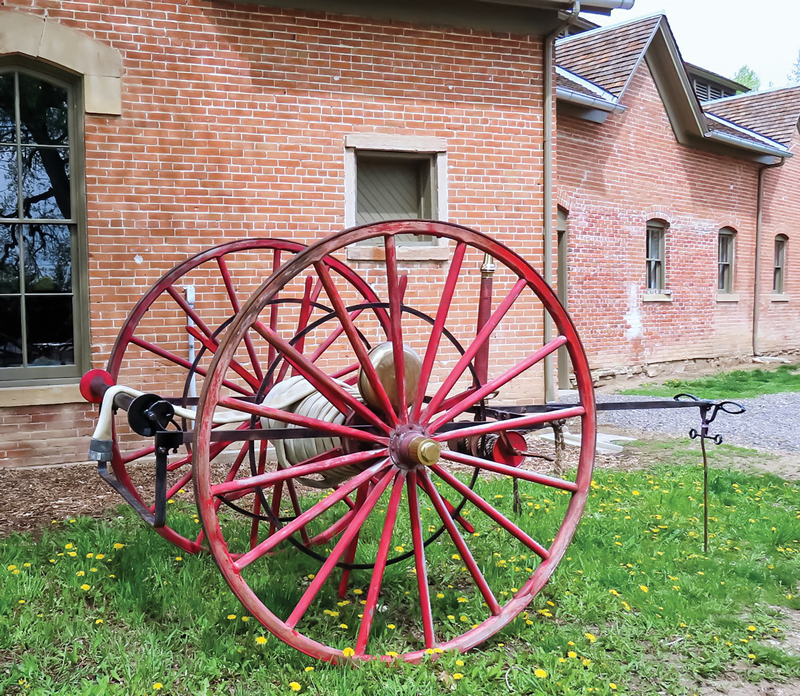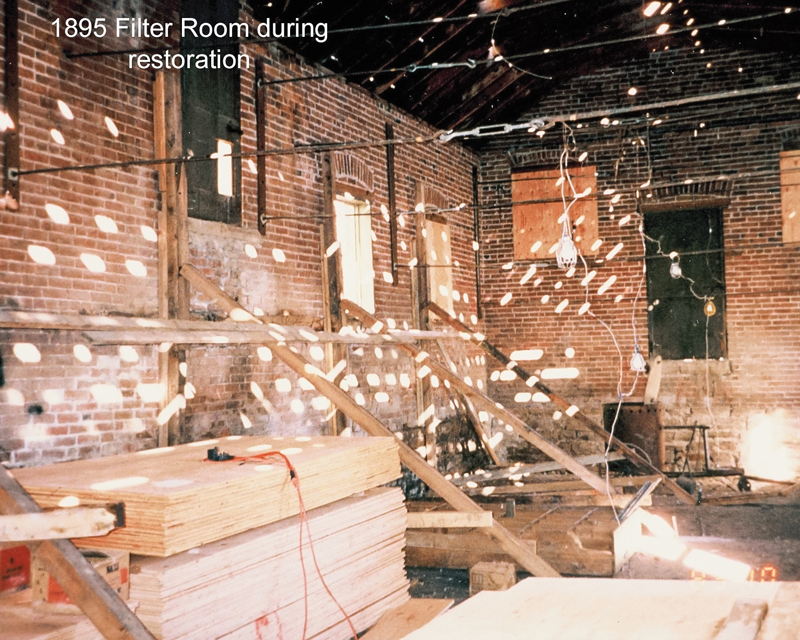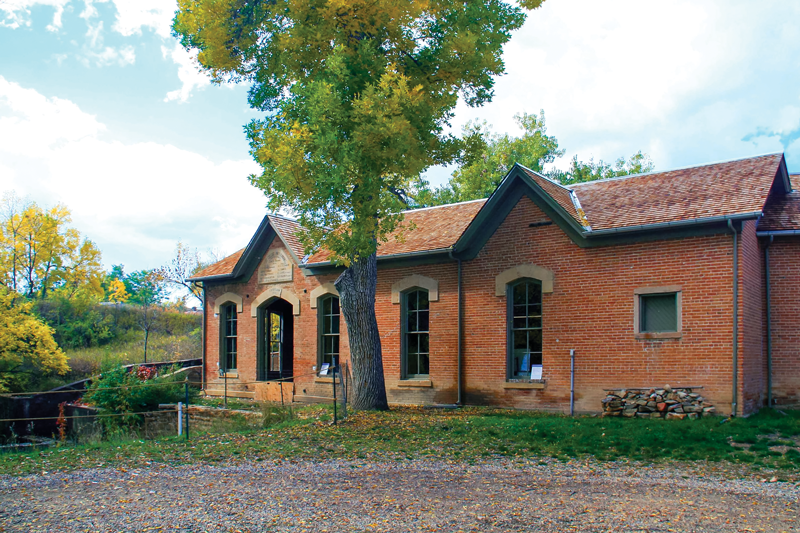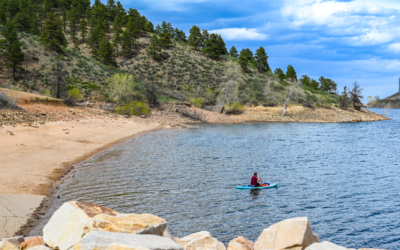In 1882, Fort Collins had only 1,400 people and they had just built their very first city hall. Heck, this was just six years after Colorado became a state.
However, also way back in 1882, there was only one way for Fort Collins to fight a fire: By the bucket brigade. After years of battling horrible fires and with the foresight that both the city and its new college would be growing, the city passed a bond issue that raised $85,000 to build the first public works project in Fort Collins with Water Works, which started in 1883.

Water Works
The Water Works consisted of a canal that diverted water from the Cache la Poudre River to a pump house and then, via a four-mile wrought iron pipe, to town. The pump house had two water-driven turbines that powered pumps to pressurize the water. Pressurized water changed everything in Fort Collins, and this year the Water Works, which has been lovingly preserved since it stopped being used for water in 1905, will celebrate its 140th birthday.
Dick Spiess is the chair of the Friends of the Water Works and serves on the Poudre Landmarks Foundation (PLF) Board of Directors. He became interested in the site about seven years ago after helping with an archeologic project there to uncover structural features of the original water works that had been filled in and buried after the equipment was removed in 1920. But his passion for it grew as he learned about the history of the people who started it.
“They knew the city was going to grow. But I still couldn’t get my head around putting that kind of debt on the population for the longest time,” he says. “But really, what it was initially about was fire. Until you have a piped water source for a city, the only way you have to fight fires is a bucket brigade. Think about the period: Everyone was cooking with gas stoves and lighting was kerosene lanterns. It’s all horse and carriage. I found a newspaper article written during that time and it talked about the fire loss in the community that totaled $60,000 in a six-month period. I was stunned by that. So, then the money starts to make sense. That $85,000 was a no-brainer.”

An 1800s period hose cart on display at the Water Works.
Before the Water Works, the only water source was the Arthur ditch, where residents would scoop water out with buckets or buy it from a traveling water wagon.
“You see all these really big, beautiful houses in Old Town today with these big gardens. Well, it looked a lot different before the Water Works,” Spiess says. “If you have to carry your water in a bucket, you don’t have a garden or a lawn. After the Water Works, all the residents started building these beautiful gardens. It became a matter of pride for the community that was made possible by the delivery of water.”
Becky Douglas, volunteer for Friends of the Water Works, adds that water delivery to homes helped residents supplement what they ate. “There weren’t a lot of stores back then and that’s how you got your food,” she says.
The work to keep the Water Works open for visitors is nearly as fascinating as its history.
The Water Works helped the city grow until the new plant at Gateway Park up the canyon came online in 1905. After that, the site and the buildings were used for manufacturing and eventually for storage and for a city maintenance facility.
“In the 1980s, it was in poor condition,” Spiess says. “The roof was in terrible shape. A grassroots group came together to save the building.”

The state of the
building before most of the preservation restoration work was done.
This included investment from the city and grants from the state for building stabilization.
That grassroots effort paved the way for today’s Friends of the Water Works group, which keeps the site, including four buildings (the Water Works, Superintendent’s House, barn and chicken coop) on 23 acres, preserved for future generations. “We are so thankful for the work they did. They did so much to save the building and started the archaeological digs. Randomly, they would have an open house during that period,” Douglas says.
Today the site is open once a month and on special requests during the warmer months. Spiess and Douglas represent a second wave of volunteers and they are looking for the next group of volunteers to keep it going.
The site is overseen by the PLF, which also manages the 1879 Avery House. Vicki Woods, PLF’s executive director, says, “Local history matters because a city is not a community without an understanding of its past. The traditions, stories, civic improvements and ingenuity––such as Fort Collins’ First Water Works––transform our city into a community. Sharing these stories and continuing local traditions help strengthen our community connection.”
Join the Celebration
On June 10, the Fort Collins Water Works, 2005 N. Overland Trail, will celebrate its 140th birthday with an open house from 10 a.m. to 3 p.m. Events will include local blacksmiths, fire department vehicles and more.
Poudre Landmarks Foundation manages the 1883 Water Works and the 1879 Avery House. Private Tours may be scheduled at poudrelandmarks.org.
Poudre Landmarks Foundation and the Friends of the Water Works are pleased to welcome Liz Barnez back to the 1883 Water Works for a benefit concert from
5 to 7 p.m. on Aug. 20. Details coming soon at poudrelandmarks.org.
Regular open houses are at the Water Works the second Saturday of the month from May to October from 10 a.m. to
3 p.m.







